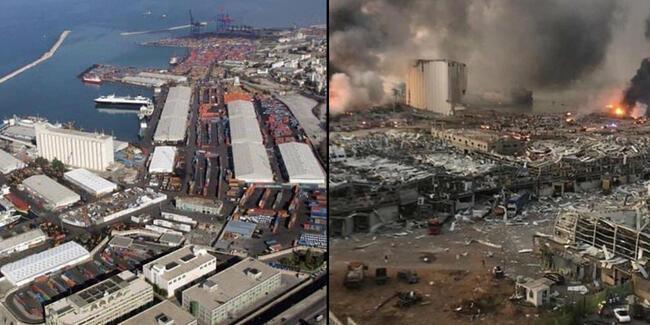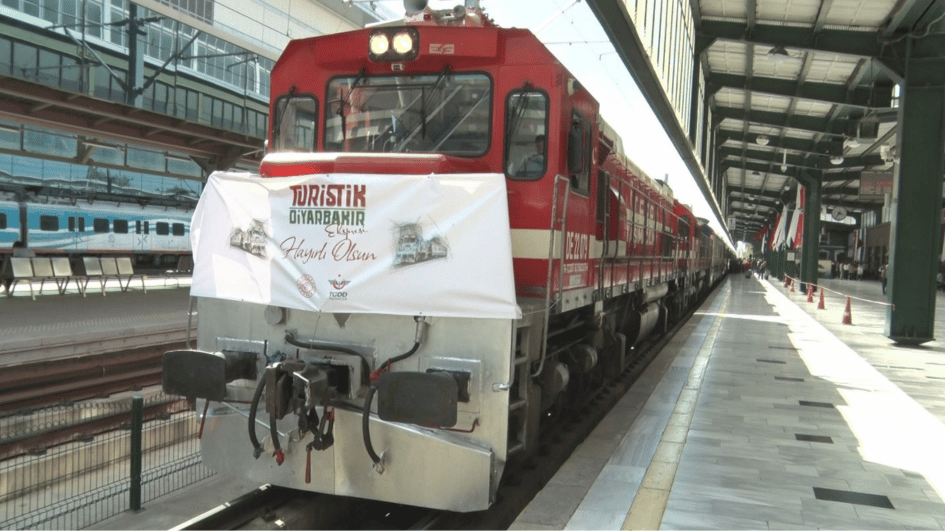Search for survivors after Beirut blast kills at least 135, injures 4,000
BEIRUT

Lebanese rescue workers dug through rubble on Aug. 5 looking for survivors after a massive warehouse explosion sent a devastating blast wave across Beirut, killing at least 135 people and injuring nearly 4,000.
Officials said the toll was expected to rise after the blast at port warehouses that stored highly explosive material.
The explosion was the most powerful ever to rip through Beirut, a city still scarred by civil war three decades ago and reeling from an economic meltdown and a surge in coronavirus infections.
Prime Minister Hassan Diab said 2,750 tonnes of the agricultural fertilizer ammonium nitrate that had been stored for years in a portside warehouse had blown up, sparking "a disaster in every sense of the word".
"What happened today will not pass without accountability," said Diab. "Those responsible for this catastrophe will pay the price."
General Security chief Abbas Ibrahim said the material had been confiscated years earlier and stored in the warehouse, just minutes from Beirut’s shopping and nightlife districts.
An official source familiar with preliminary investigations blamed the incident on negligence. Ordinary Lebanese directed anger at politicians who have overseen decades of state corruption and bad governance that plunged the nation into financial crisis.
"It's like a war zone. I'm speechless," Beirut's mayor, Jamal Itani, told Reuters while inspecting damage he estimated ran into billions of dollars. "This is a catastrophe for Beirut and Lebanon."
The head of Lebanon's Red Cross, George Kettani, said at least 100 people had been killed. "We are still sweeping the area. There could still be victims. I hope not," he said.
A soldier at the port, where relatives of the missing scrambled for news of their loved ones, told AFP: "It’s a catastrophe inside. There are corpses on the ground. Ambulances are still lifting the dead."
A woman in her twenties stood screaming at security forces, asking about the fate of her brother, a port employee.
"His name is Jad, his eyes are green," she pleaded, to no avail as officers refused her entry.
"It was like an atomic bomb," said Makrouhie Yerganian, a retired schoolteacher in her mid-70s who has lived near the port for decades.
"I’ve experienced everything, but nothing like this before," even during the country’s 1975-1990 civil war, she said.
"All the buildings around here have collapsed."
The intensity of the blast threw victims into the sea and rescue teams were still trying to recover bodies. Many of those killed were port and custom employees and people working in the
area or driving through during rush hour.
The Red Cross was coordinating with the Health Ministry to set up morgues because hospitals were overwhelmed, Kettani said.
Facades of central Beirut buildings were ripped off, furniture was sucked into streets and roads were strewn with glass and debris. Cars near the port were flipped over.
People walked around in shock, with helicopters overhead and teams searching for the missing at sea.
"This is the killer blow for Beirut, we are a disaster zone. My building shuddered, I thought it was an earthquake," said
Bilal, a man in his 60s, in the downtown area. Like others, he blamed politicians.
"We already have a financial economic crisis, people are hungry and, these thieves and looters, will they compensate for the losses? Who will compensate for those who lost their loved ones," he said.
Up to 300,000 left homeless by Beirut blast: Governor
A huge blast in Beirut has left 300,000 people homeless and caused damage across half of the city estimated to cost more than $3 billion, its governor told AFP on Aug. 5.
"I think there are between 250,000 and 300,000 people who are now without homes," said Marwan Aboud, adding that the estimated cost of the damage from Tuesday’s explosion was between $3.0 billion and $5.0 billion dollars.
Engineers and technical teams have yet to conduct an official assessment, he said, adding that damage from the blast in the port area seems to have extended over half of the city.
The port district was left a tangled wreck, disabling the nation's main route for imports needed to feed a nation of more than 6 million people. Lebanon has already been struggling to house and feed hundreds of thousands of refugees from Syria.
"The blast blew me metres away. I was in a daze and was all covered in blood. It brought back the vision of another explosion I witnessed against the U.S. embassy in 1983," said Huda Baroudi, a Beirut designer.
The U.S. embassy in Beirut, which moved to another part of the city after the 1983 attack, warned residents about reports of toxic gases released by the blast, urging people to stay
indoors and wear masks.
Footage of the explosion posted on social media showed a column of smoke rising from the port, followed by an enormous blast, sending a white mushroom cloud and fireball into the sky.
Those filming the incident from tower blocks as far as 2 km (one mile) from the port were thrown backward by the shockwave.
The explosion came three days before a U.N.-backed court is due to deliver a verdict in the trial of four suspects from the
Shi'ite Muslim group Hezbollah over a 2005 bombing that killed former Prime Minister Rafik al-Hariri and 21 others. Hariri was killed by a huge truck bomb on the same waterfront, about 2 km (about one mile) from the port.
















